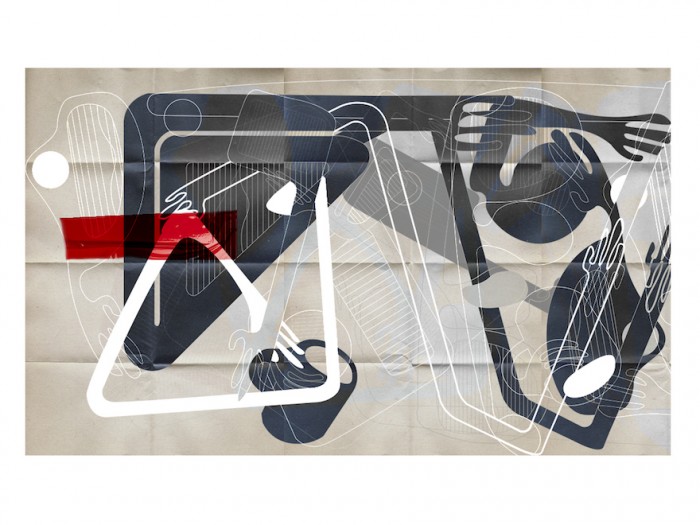
How does your study of art and architecture influence your work?
Having been formally trained in architecture, I draw on some of the design principles and elements that have influenced my architectural ideas and projects for the past few years, in my art. The parallels include the use of an existing object as a starting point. In my art this is enhanced by incorporating it into a drawn composition to accentuate its aesthetic or visual qualities. I do this both digitally and traditionally depending on the tools required to execute the idea.
How do you find a balance between digital and traditional modes of art?
I think there's definitely room for both. Certain ideas cannot be executed using only traditional media and vice-versa. I choose the medium according to what I think best honours the idea that is in my head. With that said, the way in which I use traditional mediums is very intuitive and with digital mediums it's a constant process of learning new things that make the work better.
Who would you consider as your biggest influences and why did they make an impact?
I'm a big advocate for using what already exists and making things better. So my influences include Dada-movement artists like Marcel Duchamp, Jean Tinguely and locally, the great Willie Bester. My influences generally come from a wide spectrum of makers, photographers, musicians, filmmakers and designers. The biggest, I think, is Virgil Abloh and his seven design principles.
How do you incorporate your personal journey and culture in your work?
I don't discuss it overtly in my themes but I think my personal journey is an accumulation of readings, ideas and conversations. A lot of those principles are articulated visually in my work, so the pieces are a sort of homage to the core principles that have defined my architectural, art and design practice. I try to make my work as objectively relatable as possible because I believe everyone is deserving of ideas that are beautiful and ideas that work.
What do you aim to achieve through your work?
To be of service to communities who are deserving of design ideas. To make beautiful things and things that work.
Tell me a bit about your Design Indaba Emerging Creative journey so far.
I think it's made my audience sit up a bit and take notice and as a result I've become a bit more thorough and detail-oriented in my work. The platform has opened me up to more commissioned work and the insights from those taking part in the programme have been really helpful. Seeing past inductees and how far they've progressed has helped me understand the gravity of the programme and the important role that Design Indaba plays in helping creative people and thought leaders move forward.
What do you think SA artists do well?
I think now more than ever people are comfortable in their own skins and it shows through the kind of work people are putting out.
Credits:
Thando Phenyane










